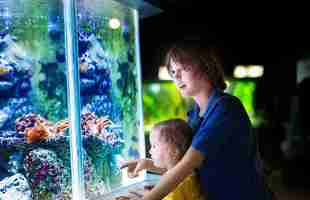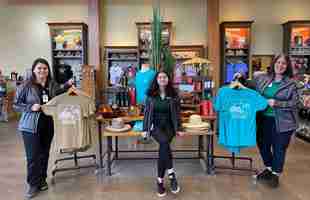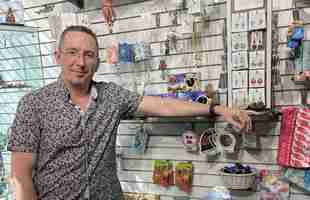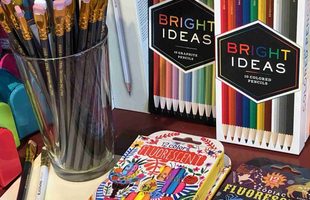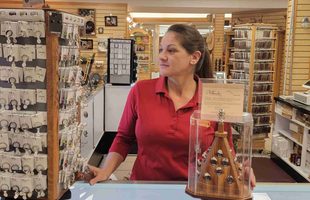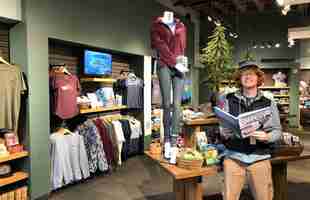By Anthony DeMarco
There are so many advantages to stocking name-dropped merchandise that it would be remarkable if there were zoos or aquariums that didn’t provide this type of product. For one thing it’s what people want and expect from their wildlife experience. For another, it’s branding that the customers actually pay for and have on display in their homes and when they’re out and about. To put it simply it’s a win-win.
The only question is how to grow this business. Those who are in charge of retail spaces and merchandise buying are pretty consistent with their strategies when it comes to name-dropped merchandise. For example, stuffed animals (plush) and other children’s items do well in most stores and these professionals are keen to make these items fun and friendly. Meanwhile, key chains, magnets, mugs and apparel are popular with adults. T-shirts and sweatshirts are among the most expensive items that are stocked. However, looking a bit more closely there are a few ways that these professionals personalize their operations in an attempt to make more sales in this category of goods.
Elizabeth Pape, retail manager and buyer at the National Mississippi River Museum & Aquarium, Dubuque, Iowa, oversees the operation of separate gift shops for the museum and aquarium, as well as a pop-up store. The retail spaces earned approximately $750,000 in sales for 2017 and nearly hit $1 million in 2016. Like many of her counterparts she sells a range of name-dropped merchandise, including shot glasses, pins, magnets, toys and plush.
“We’ve noticed the only things parents will buy are items with our name on it so we get really creative with toys and custom pieces,” she said.
Pape works closely with her main supplier, Charles Products, Rockville, Md., to determine the types of name-dropped products that have the best chance to sell and to design them in the most appealing ways.
“I tend to name-drop on things that people use time and time again. Not things that are going to sit on a shelf and collect dust,” she said. This includes toys and stuffed animals for children; and items like flashlights for adults.
Pape extended her name-dropped inventory to include product with the city of Dubuque name and logo on it after she learned there were no stores in the area selling name-dropped city products. This has been popular in attracting local residents.
“We’re a little bit of a different store where we created a local interest in our community who aren’t visiting the museum,” she said.
Plush items are her top sellers followed by clothing – mostly T-shirts that she gets to help design. “Our whole mission is to tell the story of what they see. When a child has an experience where they touch a stingray in the museum, they want to take home a stingray.”
Pape has had success keeping costs down while keeping margins up at about 150 percent to 200 percent.
“I figure they’ll shop more if they feel they can afford the pieces in the store. This has clearly proven to be true.”
Stephanie Sanderson, Visitor Services manager at the Mesker Park Zoo, Evansville, Ind., has the responsibility for a retail operation that averages about $200,000 per year in sales. Plush, coin books, key chains, apparel, lapel pins and other souvenir items are among the novelties that perform well. However, her best-selling items are magnets.
Sanderson said it’s important for her peers to understand that customers want and expect name-dropped merchandise.
“It does sell,” she said. “When they are purchasing a magnet, keychain and whatever, they want a name-drop.” She added that she tries to be innovative and creative in providing name-dropped items for children, including stuffed animals and purses, “so kids have something that is name-dropped. Not just the adults.”
Kathy Jones is the gift shop manager and buyer for Seaside Aquarium, where she manages a small retail store (she estimates 260 square feet) in the beach resort town of Seaside, Ore. Visitors to the private aquarium ebb and flow based on the currents of the season.
“It’s definitely a tourist town. We’re very busy in the summer and quiet in the winter,” she said.
No matter the season one item that sells well year-round is Christmas ornaments, which, along with name-dropped mugs, are the store’s most popular items.
A few years ago she increased the stock of name-dropped ornaments not only based on sales figures but by listening to customers as they talk among themselves.
“People make comments that they always buy an ornament everywhere they go,” she said. “We hear a lot of people asking when they come in, ‘I wonder if they have Christmas ornaments?’ You can hang some of these ornaments in a window year-round without even knowing it’s a Christmas ornament.”
The store’s inventory includes snow globes, stickers, postcards and other items people can easily take with them back home. Being a beach resort, they also sell name-dropped shells.
“We’re such a tiny little gift shop we don’t have anything that’s huge,” Jones said. “We have smaller souvenirs that people can put in suitcases that say either Seaside Aquarium or Seaside, Oregon.”
Sanderson at Mesker Park Zoo also said name-dropped Christmas ornaments are popular year-round.
Anna Milts is the gift shop buyer for Wildlife World Zoo, an aquarium, zoo and safari park in Litchfield Park, Ariz., just outside of Phoenix. Like the National Mississippi River Museum, this wildlife center has separate gift shops for the zoo and aquarium.
Milts said she is working at placing all of her smaller name-dropped souvenirs—such as key chains, shot glasses and similar items—at one place in the stores so visitors will have an easier time finding them. “Everyone is looking for souvenirs with our name on it, so soon they can go to one area of the store to find them.”
She says key chains are her best-sellers because they appeal to children and adults. “Kids can either attach it to their backpacks for school or use it for their house key and adults use it as a typical key chain.”
Bridget Nilges, guest services manager of the Great Plains Zoo & Delbridge Museum of Natural History in Sioux Falls, S.D., manages more than 700 square feet of retail space that has a variety of items that includes plush items, mugs, apparel, hats, shot glasses and key chains.
Among her most important tips to her peers are “be creative, know what your customers are interested in and keep an eye out for trendy items.”
Like others, her best-selling items are plush toys, magnets and mugs that are creative and versatile. “They are collector’s items and we try to make them cute and fun for the kids.”
While the store managers and buyers have control over the merchandise and displays within the store, Pape at the National Mississippi River Museum & Aquarium, noted that at least some of the business in the store depends on the popularity of the rolling exhibitions. For example, in 2017, sales were driven by a National Geographic Monster Fish exhibit. In 2016 sales were 20 percent higher than in 2017 because of a highly popular dinosaur exhibition.
“You can’t compete with dinosaurs.”
